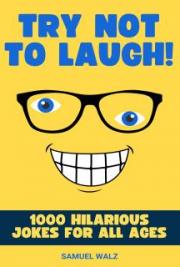Firearms-Control Legislation and Policy: Canada
Summary
The control of firearms in Canada is predominantly governed by the Firearms Act, the Criminal Code, and their subordinate regulations. The Criminal Code defines the main categories of firearms, which include restricted, prohibited, and non-restricted firearms. The Firearms Act regulates the possession, transport, and storage of firearms.
Canadian law has both licensing and registration requirements for the possession and acquisition of firearms. These requirements are administered by the Royal Canadian Mounted Police (RCMP) through the Canadian Firearms Program (CFP).
Applicants are required to pass safety tests before they can be eligible for a firearms license. Applicants are also subject to background checks, which take into account criminal, mental health, addiction, and domestic violence records.
Back to Top
Overview of Firearms-Control Laws and Regulations
At the federal level in Canada, firearms are predominantly regulated by the Firearms Act[1] and Part III of the Criminal Code.[2] Apart from these federal laws, “[p]rovinces, territories or municipalities may have additional laws and regulations that apply in their jurisdiction. For example, provinces are responsible for regulating hunting.”[3]
Categories of Firearms
The Criminal Code identifies “the various firearms, weapons and devices regulated by the Firearms Act.”[4] The Code classifies firearms into three categories: restricted,[5] prohibited,[6] and non-restricted.[7] Non-restricted firearms “include ordinary shotguns and rifles, such as those commonly used for hunting. But some military type rifles and shotguns are prohibited.”[8] Restricted firearms include “certain handguns and some semi-automatic long guns (not all semi-automatic long guns are restricted or prohibited). Rifles that can be fired when telescoped or folded to shorter than 660 millimeters, or 26 inches, are also restricted.”[9] Prohibited firearms “include most 32 and 25 caliber handguns and handguns with a barrel length of 105 mm or shorter. Fully automatic firearms, converted automatics, firearms with a sawed-off barrel, and some military rifles like the AK 47 are also prohibited.”[10]
Note also that “antique firearms are not considered firearms for licensing and registration purposes.”[11]
Licensing and Registration Requirements
1. Licensing and Permits
The Firearms Act and its supporting regulations govern the possession, transport, and storage of firearms.[12] The Act stipulates the rules for possessing and acquiring a firearm,[13] which include both licensing and registration requirements.[14] A person must have a valid firearms license to possess or acquire firearms as well as ammunition. A firearms license is issued to a license holder if he or she has “met certain public-safety criteria and is allowed to possess and use firearms.”[15]
According to the RCMP website, “[i]ndividuals must be at least 18 years old to get a licence that will allow them to own or to acquire a firearm,”[16] known as a Possession and Acquisition Licence, or PAL. Applicants seeking to acquire a license for non-restricted firearms are required to pass the Canadian Firearms Safety Course (CFSC) tests.[17] If applicants are applying for a license for restricted or prohibited firearms they must pass the Canadian Restricted Firearms Safety Course (CRFC) tests in addition to the CFSC.[18]
The PAL is the only license now available to new applicants over eighteen years old. An existing Possession-Only License,[19] or POL, can be renewed, but new ones have not been issued since 2001. According to the Canadian Bar Association (CBA), “[a] Possession-Only Licence lets you use firearms already registered to you. It also lets you borrow firearms of the same class as the ones you own.”[20]
Minors aged twelve to seventeen can get a minor’s license that will “allow them to possess a non-restricted rifle or shotgun, but a licensed adult must be responsible for the firearm.”[21] Applicants must also complete the Canadian Firearms Safety Course and pass the test in order to get a minor’s license.[22]
A PAL can be issued for a firearm of any class (non-restricted, restricted, and prohibited). However, possessing or acquiring restricted[23] or prohibited firearms is subject to very stringent requirements. The general rule is that restricted and prohibited firearms must be possessed in the holder’s residence (or at a place authorized by a chief firearms officer), as recorded in the Firearms Registry.[24] According to the Act, a restricted or prohibited firearm can be transported and used under very strict and specific circumstances, including among others “for use in target practice, or a target shooting competition.”[25]
Under the Firearms Act and its regulations, a person can carry a restricted firearm or prohibited handgun, whether concealed or unconcealed, only in very limited circumstances.[26] In most cases, a permit known as an Authorization to Carry (ATC) is required, such as when “an individual needs restricted firearms or prohibited handguns for use in connection with his or her lawful profession or occupation”[27] or to protect life.[28]
According to the RCMP, persons are allowed to possess only certain prohibited firearms “if they had one registered in their name when it became prohibited, and they have continuously held a valid registration certificate for that type of prohibited firearm from December 1, 1998, onward.”[29] Moreover, a PAL “allows an individual to acquire only prohibited firearms in the same categories as the ones currently registered to them, and only if the firearms they wish to acquire were registered in Canada on December 1, 1998.”[30] Restricted or prohibited firearms must also be “verified by an approved verifier if they are being transferred to a new owner and have not been previously verified.”[31]
Firearms licenses are “generally valid for five years, and must be renewed before they expire.”[32] It is the license holder’s responsibility to apply for a license renewal.
Back to Top
2. Registration
Under the Firearms Act, all restricted and prohibited firearms must be registered.[33] After April 2012, pursuant to amending legislation, non-restricted firearms no longer have to be registered.[34] However, “due to a Court Order issued by the Quebec Superior Court, residents of Quebec are still required to register non-restricted firearms.”[35]
All licensing and registration is managed by the Royal Canadian Mounted Police’s Canadian Firearms Program (CFP).[36] The CFP manages the Canadian Firearms Registry.[37]
Criminal and Psychiatric Checks
According to section 5(1) of the Firearms Act, “[a] person is not eligible to hold a licence if it is desirable, in the interests of the safety of that or any other person, that the person not possess a firearm.”[38] Therefore, “[a]n applicant for a firearm licence in Canada must pass background checks which consider criminal, mental, addiction and domestic violence records.”[39] Besides criminal checks, in order to determine eligibility under the Act, authorities must consider whether within the previous five years the applicant
has been treated for a mental illness, whether in a hospital, mental institute, psychiatric clinic or otherwise
and whether or not the person was confined to such a hospital, institute or clinic, that was associated with
violence or threatened or attempted violence on the part of the person against any person; or
has a history of behavior that includes violence or threatened or attempted violence on the part of the
person against any person.[40]
In addition to background checks, “third party character references for each gun licence applicant are required.”[41]
Applicants are screened using a two-tiered process. According to a 2010 evaluation report on Canada’s Firearms Program, “[t]his process entails submitting an application requesting that the applicant provide detailed personal information; when this application is assessed by the CFP, special attention is given to those applying for a Prohibited and Restricted Firearm License.”[42] Moreover, all applicants are also “screened on an on-going basis through the provisions of ‘continuous eligibility’, a monitoring function that has a licensee ‘flagged’ for a review of their license should a matter of public safety arise after they have obtained their license.”[43]
Back to Top
Storage, Transportation, and Display of Firearms
Regulations supporting the Firearms Act also stipulate specific rules “for storing, transporting and displaying firearms safely to deter loss, theft and accidents. Provinces may have additional regulatory requirements.”[44]
All firearms have to be unloaded when stored. Non-restricted firearms must be secured with a locking device, “such as a trigger lock or cable lock (or remove the bolt) so the firearms cannot be fired,” or the firearm must be locked “in a cabinet, container or room that is difficult to break into.”[45] Restricted and prohibited firearms must be secured with locking devices and be kept in a cabinet, container, or room, or must be kept “in a vault, safe or room that was built or modified specifically to store firearms safely.”[46] Separate rules apply for displaying firearms in a home.[47]
Non-restricted firearms “must be unloaded during transportation.”[48] Restricted and prohibited firearms must be unloaded and secured with locking devices and locked in a “sturdy, non-transparent container.”[49] Moreover, bolts and or bolt carriers must be removed from automatic firearms (if removable). Also, for restricted and prohibited firearms an Authorization to Transport permit must be obtained.[50]
Criminal Sanctions
Both the Firearms Act and the Criminal Code contain offenses and penalties for the “illegal possession or misuse of a firearm.”[51] Section 91(1) of the Criminal Code criminalizes the possession of a firearm without a license and registration certificate.[52] The Code also contains provisions on the use of firearms or imitation firearms in the commission of an offense,[53] careless use of firearms,[54] pointing of a firearm,[55] improper storage,[56] and the failure to report a lost or found firearm.[57] The Code also contains provisions for certain possession/use, trafficking, assembly, and import/export offenses.
In addition, the Firearms Act includes offenses such as contravening conditions of a license, registration certificate, or authorization;[58] making false statements to procure a license, registration certificate, or authorization;[59] and defacing or altering a license, registration certificate, or authorization.[60]
Back to Top
Impact
Numerous studies have been conducted to assess the impact of Canada’s firearms legislation on firearms-related deaths. Studies have attempted to evaluate three different periods of reform, which involved Bill C-51 in 1977, Bill C-17 in 1991, and Bill C-68 in 1995.
According to a 1988 study, “the use of firearms in Canadian homicides has declined since the legislative changes in gun control and capital punishment in late 1976.” However, the study found that the changes in the law had no impact on total standardized national homicide rates.[61] A 1994 report concurred that “[d]ata from Canada from 1969 to 1985 showed that the passage of a stricter firearms control law in 1977 was associated with a decrease in the use of firearms for homicide but an increase in the use of all other methods for homicide.”[62] Another study on the impact of gun control legislation (Bill C-51) in Canada “suggests that controlling access to lethal means for suicide may be an effective tactic.”[63]
However, according to a paper by Professor Robert Mundt,
[t]he evidence suggests that the 1977 legislation has had little perceptible impact in any of the aforementioned
areas [violent crime, suicides, and accidental deaths]. One possible reason, apart from the possible conclusion
that gun control has no direct effect on behaviour, is that, despite the legislation, the actual availability of
firearms in the hands of Canadians has risen.[64]
A 2004 study looking at the impact of the Firearms Act on suicide found that “[a] decrease in firearm suicides was most noticeable in the under-25 age group, although it was in this same age group that the general suicide rate increased the most. The reduction of firearm suicides was not accompanied by a decrease in overall suicide rates.”[65] Another study found that “[t]here is no discernable impact on public safety by the firearm program”[66] instituted by the Firearms Act.
A 1998 study commissioned by the Department of Justice, which reviewed most literature available at that time, found that the impact of firearms regulations remained “somewhat inconclusive and controversial, partly because the studies have attempted to isolate the impact of the 1977 legislation, and because of the theoretical and methodological challenges, and issues of data quality and availability, inherent in this type of evaluative research.”[67]
A 2004 study found “a significant decrease after passage of Bill C-17 [in 1991] in the rates of suicides and homicides involving firearms and the percentage of suicides using firearms.”[68] However, more recent studies appear to present a mixed picture. A 2012 study concluded that the data “failed to demonstrate a beneficial association between [firearms] legislation and firearm homicide rates between 1974 and 2008.”[69] Some criticize this study since it did not take into account suicide deaths, which account for three-quarters of gun deaths.[70]
According to 2010 data available at Statistics Canada, over the past thirty years firearm-related homicides have continued to decline.[71] Moreover, “[m]uch of the decline in firearm-related homicide since the early 1980’s can be attributed to a decrease in homicides involving a rifle or shotgun.”[72] According to 2011 data,
[t]here were 158 homicides committed with a firearm in 2011, 13 fewer than the previous year. The 2011 rate of
0.46 firearm homicides per 100,000 population was the lowest in almost 50 years. The recent decline in the rate
of firearm homicides is mainly due to a drop in the rate of homicides committed with a handgun, which has fallen
nearly 30% over the past four years. However, handguns still accounted for about two-thirds of all firearms used
to commit homicide in 2011.[73]
Back to Top
Distribution of Firearms
According to the 2007 Small Arms Survey,[74] Canada was then ranked thirteenth in the world out of 178 countries surveyed in civilian gun ownership, with a ratio of 23.8 firearms per 100 people.[75] At that time, the estimated total number of guns held by civilians in Canada was 9,950,000.[76]
According to data of the RCMP, as of September 2012 Canadians held 1,927,693 valid licenses for firearms,[77] which equates to 5,758 licenses per 100,000 population.[78] In 2011, the RCMP reported that there were 7,861,902 firearms registered to individuals and businesses.[79]
Prepared by Tariq Ahmad
Legal Research Analyst
February 2013
- Firearms Act, S.C. 1995, c. 39, http://laws-lois.justice.gc.ca/eng/acts/F-11.6/. For a detailed timeline of Canada’s firearms control laws, see History of Firearms Control in Canada: Up to and Including the Firearms Act, RCMP, http://www.rcmp-grc.gc.ca/cfp-pcaf/pol-leg/hist/con-eng.htm (last modified June 19, 2012). [Back to Text]
- Criminal Code, R.S.C. 1985, c. C-46, pt. III, http://laws-lois.justice.gc.ca/eng/acts/C-46/. [Back to Text]
- Canadian Firearms Program: Frequently Asked Questions – General, RCMP, http://www.rcmp-grc.gc.ca/cfp-pcaf/faq/index-eng.htm#a1 (last modified Sept. 21, 2012). [Back to Text]
- Id. [Back to Text]
- Criminal Code § 84(1) (defining “restricted firearm”). [Back to Text]
- Id. (defining “prohibited firearm”). [Back to Text]
- These are firearms that are neither restricted nor prohibited. [Back to Text]
- Firearms and Firearms Act, The Canadian Bar Association (CBA) British Columbia Branch, http://www.cba.org/bc/public_media/criminal/242.aspx (last updated Nov. 2012). [Back to Text]
- Id. [Back to Text]
- Id. [Back to Text]
- For more information, see CBSA, Importing a Firearm or Weapon into Canada, http://www.cbsa-asfc.gc.ca/publications/pub/bsf5044-eng.pdf (last visited Jan. 31, 2013). [Back to Text]
- Library of Parliament, Legislative Summary, Legislative Summary of Bill C-19: An Act to Amend the Criminal Code and the Firearms Act para. 1.2(Nov. 11, 2011), http://www.parl.gc.ca/About/Parliament/ LegislativeSummaries/bills_ls.asp?ls=c19&Parl=41&Ses=1&source=library_prb&Language=E#a3. [Back to Text]
- Canadian Firearms Program: Frequently Asked Questions – General, RCMP, supra note 3. [Back to Text]
- Firearms Act § 4(a). [Back to Text]
- Canadian Firearms Program: Frequently Asked Questions – General, RCMP, supra note 3. [Back to Text]
- Firearms Act § 7(1). See also Highlights of Canada’s Firearms Laws, RCMP, http://www.rcmp-grc.gc.ca/cfp-pcaf/pol-leg/hl-fs-eng.htm (last modified May 14, 2008). [Back to Text]
- Firearms Act § 7(1)(a). According to the RCMP website, “[t]he legislation stipulates that individuals wishing to acquire non-restricted firearms must take the CFSC [Canadian Firearms Safety Course] and pass the tests OR challenge and pass the CFSC tests without taking the course.” Canadian Firearms Safety Course, RCMP, http://www.rcmp-grc.gc.ca/cfp-pcaf/safe_sur/cour-eng.htm (last modified Aug. 27, 2012). [Back to Text]
- Firearms Act § 7(1)(b). See also Canadian Restricted Firearms Safety Course, RCMP, http://www.rcmp-grc.gc.ca/cfp-pcaf/safe_sur/cour-res-eng.htm (last modified Feb. 5, 2004). [Back to Text]
- Applying for a New Possession Only Licence (POL), RCMP, http://www.rcmp-grc.gc.ca/cfp-pcaf/fs-fd/pol-pps-eng.htm (last modified Aug. 21, 2012). [Back to Text]
- CBA British Columbia Branch, supra note 8. [Back to Text]
- Firearms Act § 8. See also Firearm Users Younger than 18, RCMP, http://www.rcmp-grc.gc.ca/cfp-pcaf/fs-fd/minor-mineur-eng.htm (last modified Sept. 5, 2012). [Back to Text]
- Id. [Back to Text]
- Restricted Firearms, RCMP, http://www.rcmp-grc.gc.ca/cfp-pcaf/fs-fd/restr-eng.htm (last modified Aug. 20, 2012). [Back to Text]
- Firearms Act § 17. [Back to Text]
- Id. § 19(1). [Back to Text]
- Id. § 20. [Back to Text]
- Authorizations to Carry Restricted Firearms and Certain Handguns Regulations (Firearms Act), SOR/98-207, http://laws-lois.justice.gc.ca/eng/regulations/SOR-98-207/index.html. [Back to Text]
- Firearms Ac







